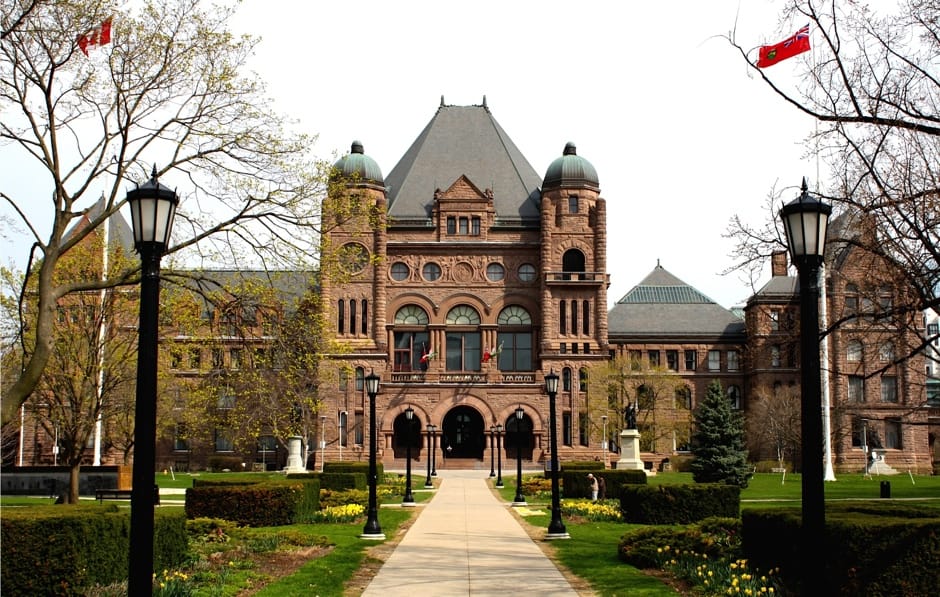Access to mental health services and adjustments to the Ontario Student Assistance Program (OSAP) are among the chief student-related concerns in the 2018 provincial budget.
Ontario’s budget for the next year was released on March 28, less than two months away from the June 7 election, and across-the-board spending increases from Kathleen Wynne’s Liberal government are reflective of electoral pressures.
The 2018–2019 plan would increase the province’s total debt to $358.8 billion, and increase the accumulated deficit by $6.7 billion from the 2017–2018 interim period to $199.1 billion.
The medium term projections beyond the 2018 budget suggest the province’s total debt will increase to $384.4 billion in the 2020–2021 period and the accumulated deficit will rise to $212.3 billion in the same period.
In line with the deficit-heavy budget, the government has proposed expenditures on multiple items concerning postsecondary students.
Mental health and addiction services
The province is pledging to spend $2.1 billion over the next four years to boost the mental health and addictions system across the province. This represents an approximately 14 per cent increase in spending in the sector, bringing the province’s total commitment to mental health over the four-year period to $17 billion. The budget stipulates the importance of targeting services towards children and youth, noting that approximately 70 per cent of mental health and addiction issues begin during childhood or adolescence.
Alongside $175 million over four years to expand public school supports, the budget accounts for an additional $11.7 million in funding for mental health workers on college and university campuses. There will also be $6 million put towards expanding campus mental health services, as per the 2017 budget’s yearly commitment.
The four-year mental health plan also targets children and youth with a $570 million commitment to community-based services. This plan would bring services to more than 12,000 young people in the next year and 46,000 of them by the end of the four-year period. Included in the provisions for children and youth is a unique “range of culturally appropriate and preventative” services designed for First Nation, Inuit and Métis communities both within and outside of urban centres.
The opioid addiction and overdose crisis gripping the province is the subject of significant spending, with the government allocating over $222 million in the implementation of a “Strategy to Prevent Opioid Addiction and Overdose.” The province will work with a task force with the aim of providing stigma-free services and funding supervised consumption and overdose prevention sites. While the year-to-year rollout of this $222 million is still being worked through, the first year will focus on Rapid Access Addiction Medicine clinics across the province. The province is holding off on the detailed provisions of its funding while it waits for more details on the delegation of opioid intervention from the federal government to the provinces.
An additional $3 million will be allocated over three years for “Project Zero,” a collaborative project between Mississauga’s health networks and school boards to expand mental health services for children, teachers, and front-line health care professionals.
Changes to financial aid
Changes to OSAP introduced in the 2018 budget primarily concern middle-income families and married students. Starting in Fall 2018 , students applying for OSAP may be eligible for more grants or loans, as parents will be expected to contribute less to their children’s education. For instance, the budget estimates that students whose parents earn $90,000 per year may be eligible to receive an additional $3,200 in OSAP assistance because of the changes. This extends to married students as well, with a reduction in spousal contributions that could result in a few thousand more in OSAP grants.
The government also proposed a simplification process for tuition payment for students on OSAP with the introduction of net tuition billing, whereby students will receive a single bill from the university that has already subtracted the amount of OSAP grant and loan funding received from the school.
Postsecondary infrastructure
The government will spend $317 million in university infrastructure across Ontario over the course of the coming year.
In addition, the next three years will see a boost to school equipment and material funding for colleges, increasing spending from $8 million to $20 million per year. Doubling down on future spending for postsecondary education, the province also pledged to put a new $500 million “to renew and modernize” university and college campuses, undertaking facility retrofits and renewal projects.


